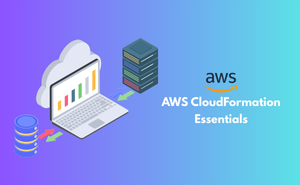👇 CELEBRATE CLOUD SECURITY DAY 👇
00
HOURS
00
MINUTES
00
SECONDS

AWS CloudFormation makes it easier to design and manage cloud resources by using templates instead of manual setup. These templates act like blueprints, telling AWS exactly what resources to create and how to connect them. This way, organizations can avoid mistakes, save time, and have consistent infrastructure across projects.
By mastering CloudFormation Essentials, individuals gain the skills to automate deployments, manage cloud services efficiently, and reduce repetitive manual tasks. It helps businesses and developers focus more on building applications while letting automation handle the infrastructure.
This exam is ideal for:
Industry-endorsed certificates to strengthen your career profile.
Start learning immediately with digital materials, no delays.
Practice until you’re fully confident, at no additional charge.
Study anytime, anywhere, on laptop, tablet, or smartphone.
Courses and practice exams developed by qualified professionals.
Support available round the clock whenever you need help.
Easy-to-follow content with practice exams and assessments.
Join a global community of professionals advancing their skills.
Yes, it works with CodePipeline, Jenkins, GitHub Actions, and others.
It’s for cloud engineers, DevOps specialists, and IT professionals working with AWS infrastructure.
You don’t need deep coding, but Knowledge of JSON or YAML is important.
Yes, it starts with basics and progresses to advanced automation.
CloudFormation uses templates in YAML/JSON, while CDK uses programming languages.
It supports most AWS services and is constantly updated.
Stacks are collections of AWS resources managed as a single unit.
It reduces human errors, saves time, and ensures consistent infrastructure.
IT services, e-commerce, finance, SaaS, and large enterprises.
No, startups and small teams use it for automation too.